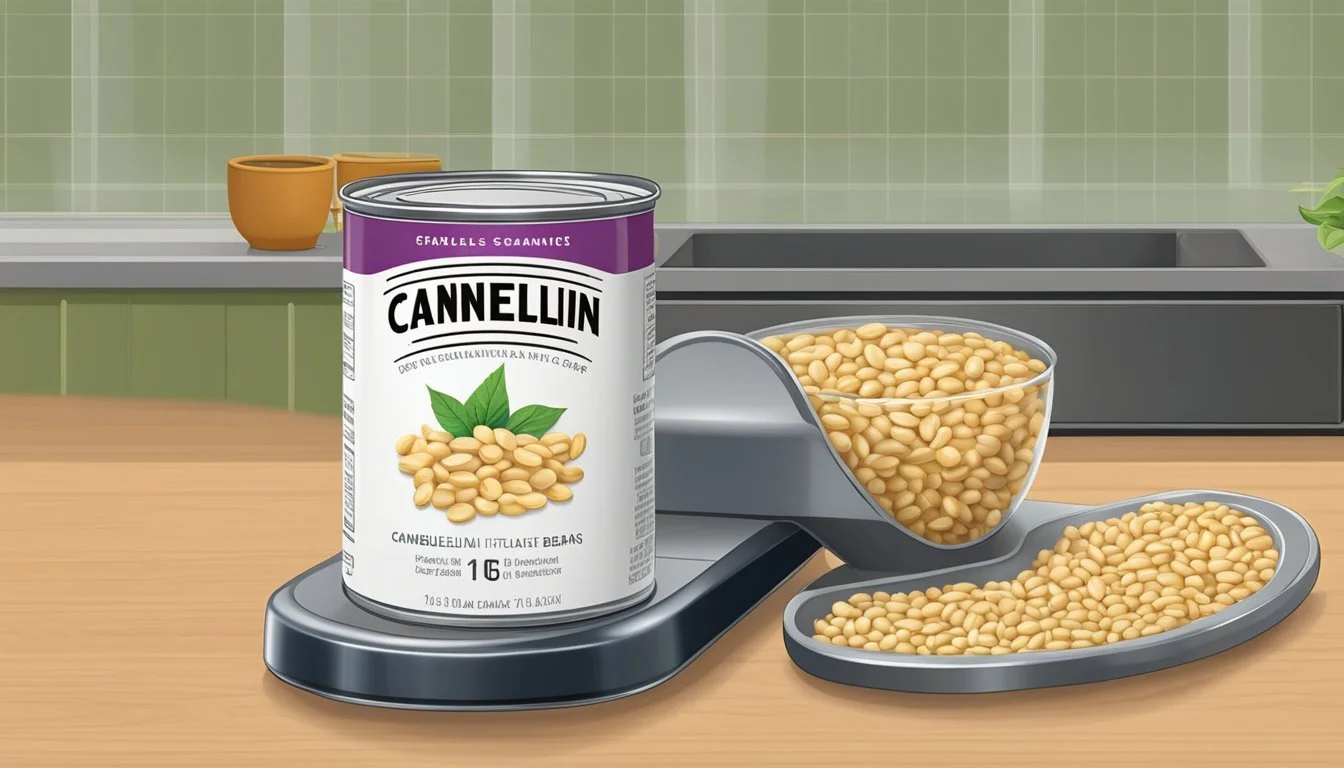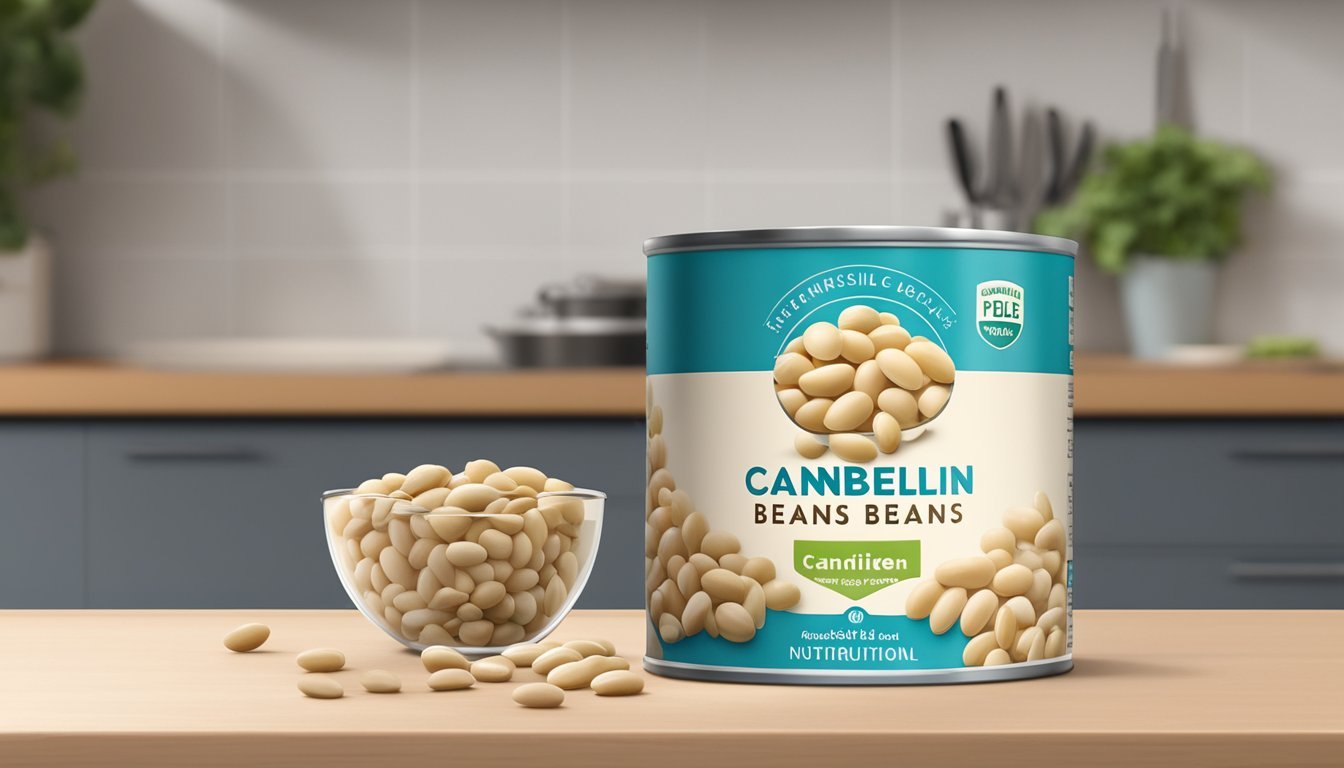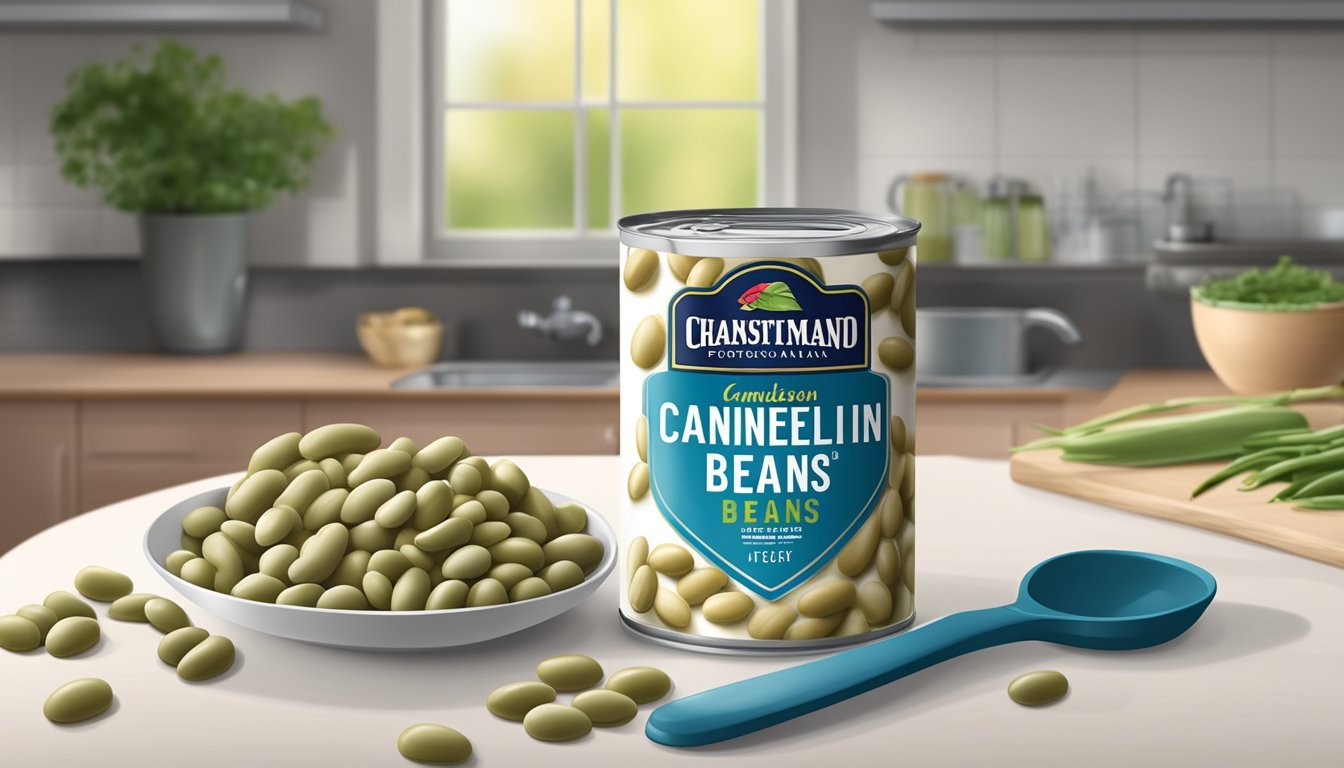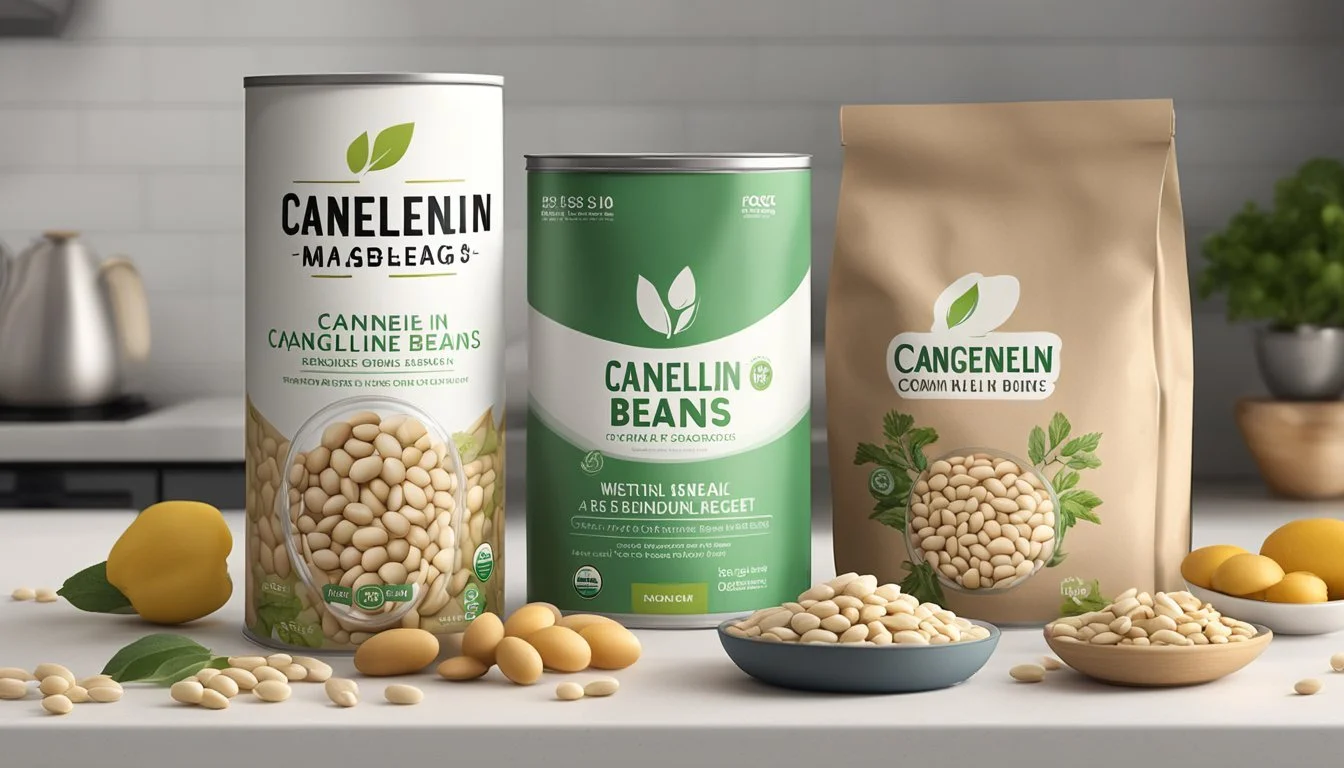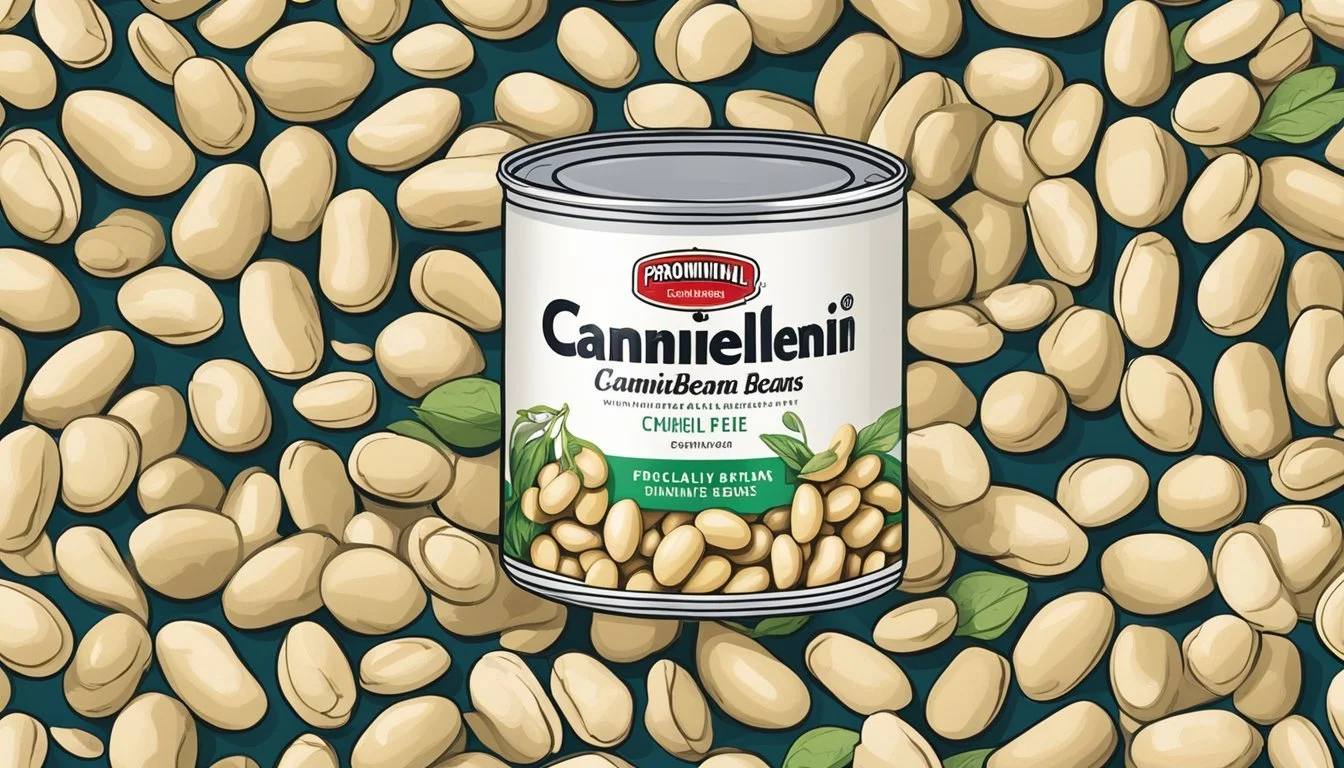How Many Ounces in a Can of Cannellini Beans?
Understanding Can Sizes and Measurements
Understanding the weight of cannellini beans in a can is useful in various cooking contexts, particularly when a recipe calls for precise measurements. Cannellini beans, also known as white kidney beans, are commonly used in soups, salads, and stews. They are often sold in cans, which contain both beans and liquid.
Canned cannellini beans typically come in two sizes, with the smaller can generally being 8 ounces and the larger can around 15 ounces. However, the weight of the beans alone once drained differs from the total weight of the can, which includes the packing liquid. When drained, a 15-ounce can of cannellini beans yields approximately 9 ounces or about 1.5 cups of beans. This measurement is crucial for those who are substituting canned beans for dried or cooking from scratch, as well as for maintaining proper proportions in recipes.
Nutritional Profile of Cannellini Beans
Cannellini beans serve as a nutritious plant-based protein source with a broad array of vitamins, minerals, and fibers that contribute to overall well-being. They offer substantial nutritional content favorable for a well-balanced diet.
Protein and Plant-Based Nutrition
Cannellini beans are prized for their high protein content, with one-half cup providing approximately 8 grams of protein. This makes them an excellent part of a plant-based diet as they add valuable amino acids, essential for those reducing their intake of animal proteins.
Dietary Benefits and Health Impact
A single serving of cannellini beans introduces significant dietary fiber, boasting about 6.7 grams per 100 grams of cooked beans. Adequate fiber intake can help regulate blood sugar levels, lower cholesterol, and promote digestive health. These beans are rich in key minerals like calcium, iron, and potassium, and also supply essential vitamins including folate, which is critical for cell function and tissue growth.
Side Effects and Considerations
While nutritious, cannellini beans can cause gas in some individuals due to their high fiber content. Additionally, canned varieties may contain excess sodium, so opting for a low-sodium version or thoroughly rinsing them under water can help mitigate this concern. Overall, incorporating cannellini beans into a diet can be done safely with consideration of these factors.
Culinary Uses for Cannellini Beans
Cannellini beans are a versatile ingredient known for their protein and fiber content, lending themselves to a range of culinary uses from hearty soups to refreshing salads. They are a staple in Mediterranean cuisine and are celebrated for their ability to absorb flavors and add substance to dishes.
Comparison with Other Beans
Cannellini beans, often compared to other white beans like Great Northern and navy beans, bring a notably creamier texture to dishes. They are lower in fat compared to soybeans and richer in flavor than navy beans, making them a preferred choice for many chefs. When examining nutrient content, cannellini beans are similar to kidney and pinto beans regarding their protein and fiber, but stand out with their lower sodium content when rinsed properly.
Recipes and Preparation
Cannellini beans shine in a variety of recipes:
Soups: They thicken soups effectively due to their creamy texture.
Salads: Their mild flavor does not overpower other ingredients.
Dips and Sauces: When puréed, they create smooth bases for dips like hummus.
Cooked cannellini beans can be simply seasoned with herbs and aromatics for a side dish, or incorporated into stews and chili for additional heartiness. Detailed recipes often involve simmering the beans with bay leaves and garlic to infuse them with flavor before incorporating into the final dish.
Flavor Profile and Texture
Cannellini beans are appreciated for their nutty flavor and firm texture. Compared to beans like chickpeas or black beans, they possess a subtler taste, making them a canvas that readily absorbs the flavors of other ingredients. When cooked properly, they maintain their shape while offering a creamy interior, ideal for both hot and cold culinary applications. This unique combination of flavor and texture complements a wide array of ingredients in multiple types of recipes, from robust soups to light bean salads.
Practical Information on Canned Cannellini Beans
When it comes to using canned cannellini beans in recipes, understanding the specifics of can sizes, preparation techniques, sodium content, and brand offerings is crucial for both health and culinary success.
Common Can Sizes and Measurements
Canned cannellini beans typically come in standard sizes. The most common size found in grocery stores is the 15-ounce can, which translates to about 1 1/2 cups of beans once drained. Labels provide this information, making it easy to measure proper amounts for recipes.
Draining and Rinsing Techniques
Before using canned cannellini beans, it is recommended to drain them of the packing water and rinse them under cold, running water. This process can reduce the sodium content, improve texture, and eliminate any tinny flavors. Beans should be thoroughly drained after rinsing to avoid excess water in the dish.
Sodium Content and Considerations
The sodium content in canned beans can vary significantly. A standard can of cannellini beans may contain around 460 milligrams of sodium per 1/2 cup serving. However, low-sodium or no-salt-added options are widely available for those monitoring salt intake. Always check the label for specific sodium information.
Brand Variations and Options
There are several brands offering canned cannellini beans, each with distinct qualities. Some brands offer affordable options that focus on value, while others may highlight organic ingredients or special preparation methods. Options range from traditional cans to those with pull-tab openings for convenience. Brand choice can affect flavor, texture, and overall quality, so individuals may prefer to experiment to find their favored product.
Substituting Cannellini Beans in Recipes
When substituting cannellini beans in recipes, it is important to consider the texture and flavor of alternatives, as well as any necessary adjustments to cooking times and recipes to maintain the nutritional value.
Suitable Bean Substitutes
Substituting cannellini beans may be necessary due to availability or personal preference. Here are common alternatives:
Kidney Beans: Similar in shape, they add a robust flavor to dishes.
Great Northern Beans: Offer a mild taste and firm texture.
Navy Beans: Small, with a mild flavor, suitable for purees and soups.
Black Beans: Provide a distinct, sweeter flavor and are best in certain cultural dishes.
Pinto Beans: Work well in spicy dishes (What wine goes well with spicy dishes?) such as chili and have a creamy texture when cooked.
Chickpeas: Although firmer, they can replace cannellini beans, especially in salads and stews.
Texture and Flavor Considerations
Cannellini beans are known for their creamy texture and nutty flavor, attributes that should be matched by the chosen substitute. When selecting an alternative, one must consider:
A bean that maintains a similar texture, such as navy beans in soups.
The flavor profile adjustments needed, for example, compensating for the sweeter taste of black beans.
Adjusting Cooking Times and Recipes
Each bean substitute comes with its own cooking requirements. Some beans may take longer to cook, while others, like chickpeas, are firmer and might not break down as cannellini beans do. Recipes may need alteration in:
Cooking times: Check beans for doneness and adjust accordingly.
Liquid amounts: Some beans absorb more or less liquid, which can affect the consistency of the dish.
Nutritional Adjustments
Beans generally offer similar nutritional profiles with high protein, fiber, vitamins, and minerals content. However, when substituting:
Protein: Ensure the substitute provides an equivalent amount of protein.
Fiber: Adjust for fiber content, which is important for digestive health.
Vitamins and Minerals: Since beans contain various nutrients, consider any changes to vitamin and mineral intake.
By considering these factors when substituting cannellini beans, one can maintain both the culinary and nutritional integrity of their dishes.
Handling and Storage Tips for Cannellini Beans
Proper storage of cannellini beans is crucial for maintaining freshness and flavor. This section covers the best practices for handling cannellini beans, from opened cans to dried beans storage.
Preserving Opened Cans
Once a can of cannellini beans is opened, they should be refrigerated within two hours to prevent spoiling. Leftover beans must be placed in an airtight container and consumed within five days.
Storing Unopened Cans
Unopened cans should be kept in a cool, dry place such as a pantry. Keep them away from heat sources to avoid compromising the beans' shelf life, which is typically 2 to 5 years before the expiration date.
Freezing and Reheating Cooked Beans
Cooked cannellini beans can be frozen in an airtight container or a freezer bag, leaving space for expansion. They can last up to 6 months in the freezer. Reheat them gently, ensuring they reach a safe internal temperature.
Dry Storage and Shelf Life of Dried Beans
Dried cannellini beans, a pantry staple, should be stored in an airtight container in a cool, dry place. If stored properly, they have an extensive shelf life, often lasting up to 2 years or longer.
Soaking and Preparation of Dried Beans
Dried beans expand significantly, so ensure to use a large enough pot. Typical soaking recommendations include 4 cups of water for every cup of dried beans, soaking either overnight or using the quick-soak method.
Refrigeration Best Practices
Leftover cooked cannellini beans should be stored in a refrigerated and airtight container to maintain freshness. Keep the temperature consistent to extend their shelf life, which is generally 3 to 5 days.
Cannellini Beans and Diet Considerations
Cannellini beans are a nutritious addition to many diets, providing plant-based protein and key nutrients with the added benefit of being low-sodium. This section outlines how they can be integrated into special diets and addresses common allergies and intolerances associated with them.
Integrating into Special Diets
Cannellini beans are an excellent source of nutrition for various special diets. They offer approximately 8 grams of plant-based protein per half-cup serving, making them suitable for vegetarian and vegan diets. Their low-sodium quality also makes them a preferred choice for those managing hypertension or following a heart-healthy diet. For individuals focusing on weight management, these beans are low in fat and high in fiber, which can promote a feeling of fullness.
Vegetarian/Vegan: High protein content complements a plant-based diet.
Heart-Healthy: Low in sodium, beneficial for cardiovascular health.
Weight Management: Low fat and high fiber aid in satiety.
Considerations for Allergies and Intolerances
When incorporating cannellini beans into a diet, one must consider potential allergies and intolerances. While beans are not a common allergen, they contain oligosaccharides, which some individuals may find difficult to digest, leading to gastrointestinal discomfort. Careful introduction into the diet can help gauge tolerance levels.
Allergies: Rare but monitor for any adverse reactions.
Intolerances: Assess for digestive tolerance to oligosaccharides.
Cannellini beans are generally well-tolerated and can be safely included in most diets, acknowledging individual tolerance and dietary restrictions.
Quantitative Information on Cannellini Beans
This section focuses on the specific sizes and measures associated with canned cannellini beans, from the weight conversion to cup measurements, interpreting product labels, and typical quantities used in recipes.
Weight Conversions from Cans to Cups
Canned cannellini beans are available in various sizes, with common can sizes being 8 ounces and 15.25 ounces.
8 ounces can be roughly equivalent to 1 cup of cooked beans.
15.25 ounces can yield approximately 2 cups.
These conversions are important for cooks needing to measure specific serving sizes, especially when translating between weight and volume measurements in recipes.
Understanding Label Information
A label on a can of cannellini beans provides essential information including the net weight in ounces and grams, and the nutritional content per serving. The net weight informs consumers about the quantity of the product, while the servings per container help them understand how many portions the can includes, guiding portion control and recipe adjustments.
Common label information:
Net Weight: 8 oz (227 grams) / 15.25 oz (432 grams)
Servings per container: Variable depending on the size of the can
Quantities in Common Recipes
Recipes often specify cannellini beans in cups, requiring a conversion from canned beans. The quantity of beans needed varies greatly depending on the dish, ranging from half a cup to several cups for larger meals.
Example Recipes:
Salad: 1 cup of beans
Chili: 2 to 3 cups of beans
Stew: 1.5 to 2 cups of beans
Understanding these common measurements can aid in planning meals and ensuring accurate ingredient ratios, leading to better culinary outcomes.
Sustainability and Environmental Impact
This section examines how the production and packaging of cannellini beans affect the environment and highlights the bean's sustainability attributes.
Impact of Legume Farming on Environment
Legume farming, of which cannellini bean cultivation is a part, is known for its low environmental footprint. The process of farming legumes, in general, benefits the soil by fixing nitrogen, thus reducing the need for synthetic fertilizers. Cannellini beans require less water compared to other protein sources, which conserves valuable water resources. The overall CO2 emissions from legume cultivation are also notably lower than from other crops, making legumes an environmentally friendlier option in agriculture.
Cannellini Beans as a Sustainable Food Choice
Cannellini beans are recognized for their role in sustainable diets due to their minimal water requirements and capability to adapt to various climates without sacrificing yield. They are not only a sustainable asset in agricultural systems but also contribute to food security by providing a source of cost-effective and nutrient-dense protein.
Packaging and Recycling Concerns
While the beans themselves are a sustainable food choice, the environmental impact of their packaging is an important consideration. Cans typically used for cannellini beans are recyclable, which mitigates some environmental concerns. However, the processes of producing and recycling cans require energy and resources, which must be optimized to minimize the environmental impact. Consumers can aid sustainability efforts by recycling cans properly.
Note: Cannellini beans are often sold dried or canned. Canned beans are deemed more convenient but may have additional considerations regarding packaging and recycling.
Consumer Buying Guide for Cannellini Beans
When purchasing cannellini beans, consumers should consider quality, price, and availability. The guide below offers advice on how to select the best product, ensure cost-effectiveness, and understand market availability.
Selecting the Best Product
Consumers should look for cans with clear labeling from reputable brands to ensure they are getting a high-quality product. The label should indicate if beans are organic or non-GMO if that is a priority for the buyer. One should check for any visible damage to the can which can affect the shelf-life of the beans.
Price Comparisons and Budget Tips
Price varies by brand and quantity. To find the most affordable option, it's recommended to compare prices of different brands and sizes. Bulk purchases or larger cans often offer better value per ounce. Consumers should set a budget and stick to it while still prioritizing quality.
Example Price Comparison:
Brand A - 8 oz Brand B - 15 oz Brand C - 15 oz (Organic) $1.29 $1.99 $2.49
Prices are illustrative and may vary.
Availability and Seasonality
Cannellini beans are a pantry staple available year-round in both dried and canned forms. While fresh beans may be subject to seasonality, their dried and canned counterparts have a long shelf life and are typically readily available in supermarkets and online stores. Consumers should consider storage space when purchasing dried beans, which require soaking and cooking but can be more economical.

